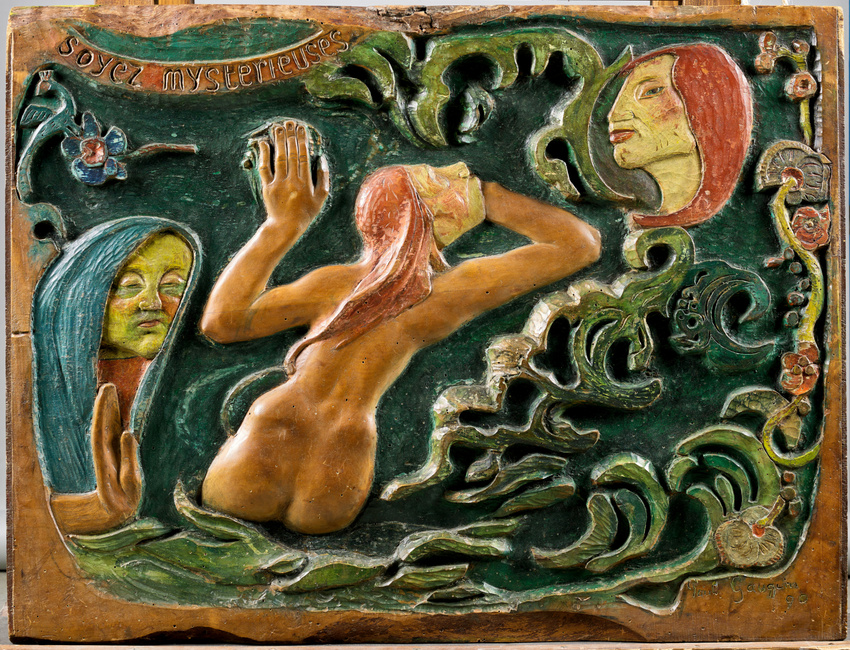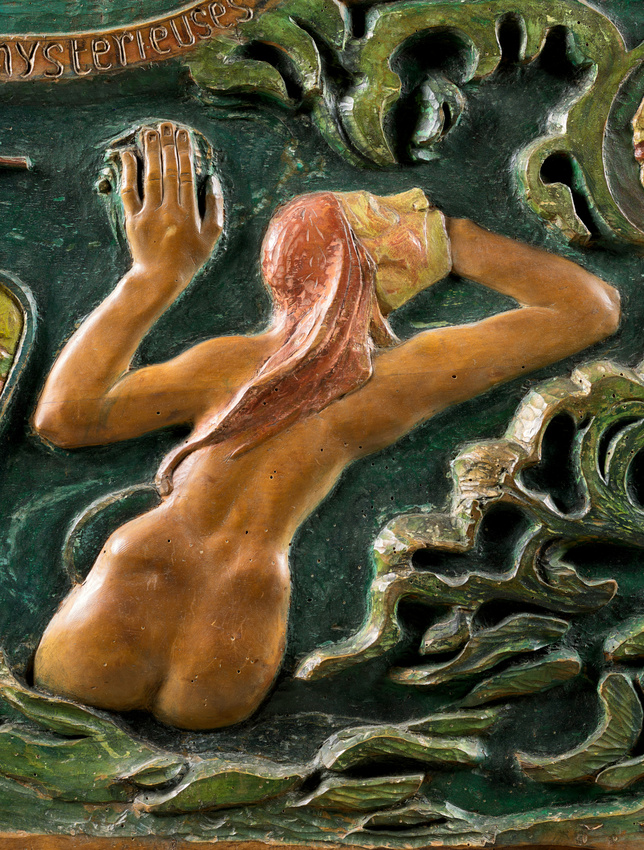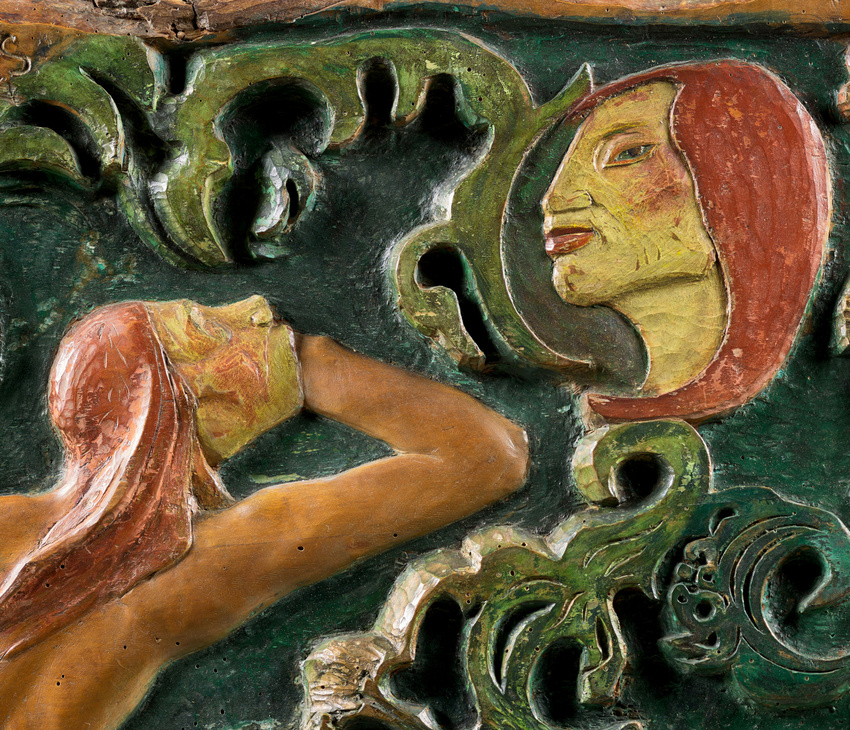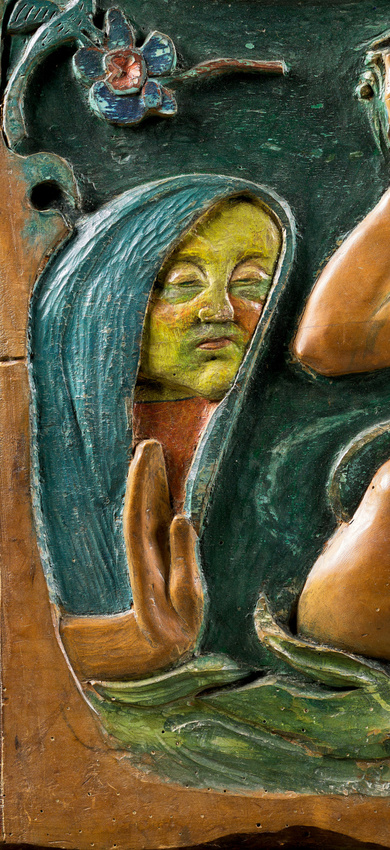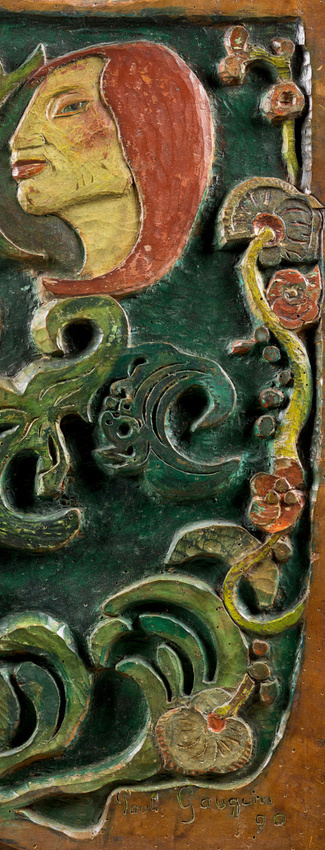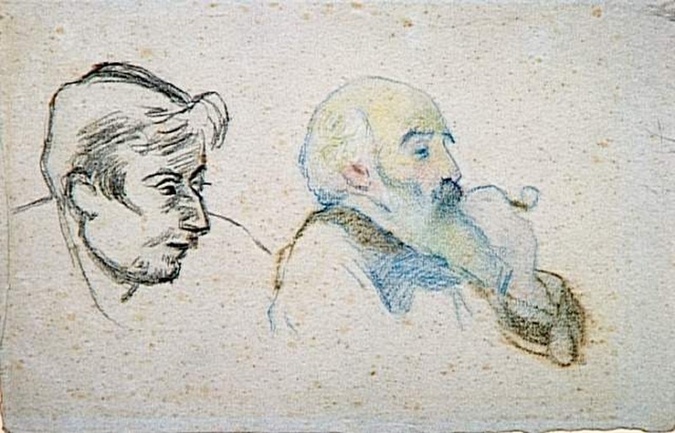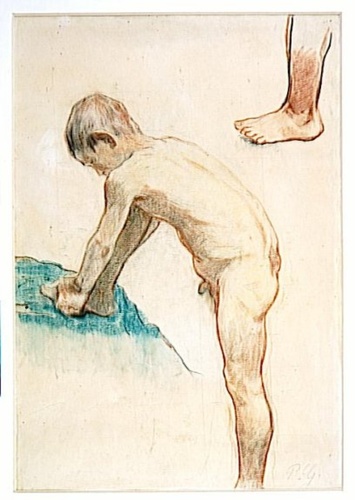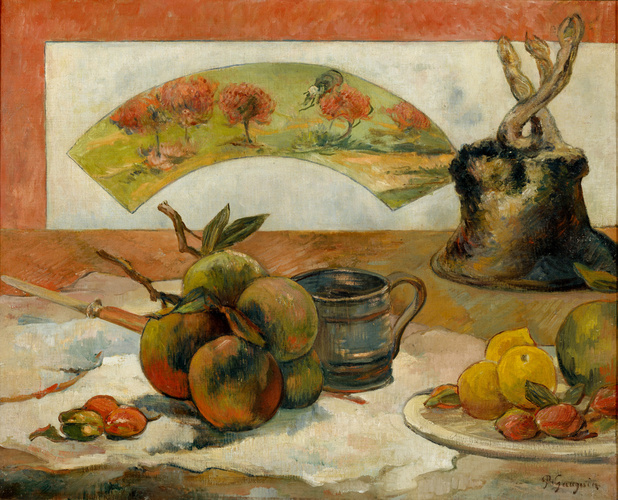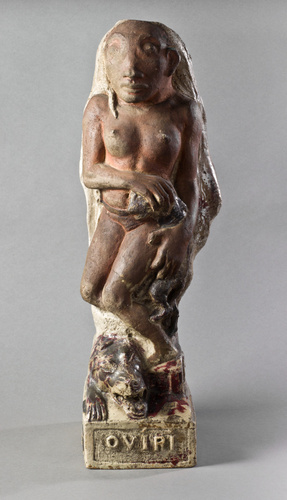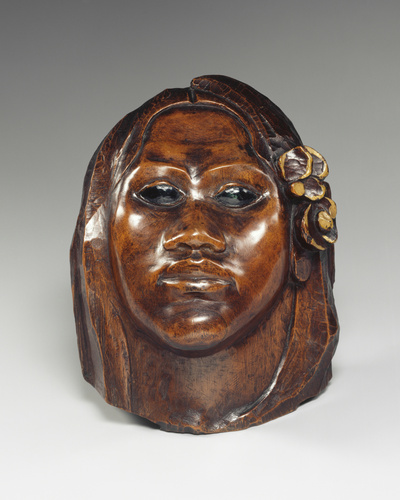Soyez mystérieuses
This back, one of the most beautiful backs in sculpture, carved by Gauguin from a piece of lime wood, conjures up the body of a Tahitian women, the colour of the wood espousing the forms in which we think we recognise a Pacific islander. In fact, the relief was carved before he first went to Oceania. We know from his letter to the young painter Emile Bernard in September 1890 that he carved this relief in Le Pouldu as a companion piece for Love and you will be happy now in the Boston Museum in the United States.
To capture the force of the so-called primitive arts that he had seen as a child in Peru, then in France with his warden Gustave Arosa and at the Universal Exhibitions in Paris, Gauguin tried to communicate through symbols.
In the lower right corner, unfurling plant forms presage the Art Nouveau style.
When it was exhibited at the Salon des XX in Brussels in 1891, the relief was called a "great farce" "going beyond the bounds of insanity" and Gauguin a "pornographic image maker". The flat planes of the faces, simplified forms and polychromy were no better understood that the imperative "Soyez mystérieuses" (Be mysterious), in an inscription that is contrary to pre-literate primitive ages. But Gauguin has did his best to captivate those who "seek the mysterious centre of thought beyond appearances."
